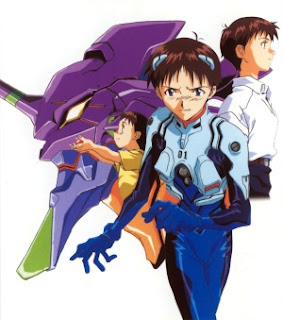The Haudenosaunee have a core
value they call the Seventh Generation. Their philosophy is that the decisions
we make today ought to result in a sustainable world seven generations into the
future, taking into consideration those who will one day inherit our world. Integral
to this value is the protection of cultural practices, ceremonies, and
languages, which can then be passed down through generations [1]. But when
faced with headlines like “Two Indigenous languages are dying every month” [2],
the question of how current and future generations will uphold Indigenous
cultures teachings and customs becomes imperative.
Digital media, including games, may be a space to
explore answers to such a question. Not only does digital media offer a way to
look back on the histories of indigenous cultures around the world, they also
are a space to imagine the future (see Figure 1). Indigenous futurism, inspired
by the Afrofuturism movement, reimagines stereotypical tropes of indigenous
peoples and explores alternate histories and futures in a variety of mediums.
The indigenous game designer Dr. Elizabeth LaPensée, a scholar of Anishinaabe
and Métis descent, describes indigenous futurism as “[looking] to those who
came before us to inform the present with hope for future generations” [3].
 |
| Figure 1. The animated film "She Falls for Ages" by artist Skawennati is an example of Indigenous Futurism. It is a science-fiction retelling of the Haudenosaunee creation story, reimagining Sky World as a futuristic utopia with Sky Woman as a world-builder (Vimeo). |
Dr. Grace Dillon, Anishinaabe scholar and Dr. LaPensée’s
mother, coined the term Indigenous Futurism. In her edited anthology of
Indigenous science fiction, Dillon describes Indigenous futurism as “…
narratives of biskaabiiyang, an Anishinaabemowin word connoting the
process of ‘returning to ourselves,’ which involves discovering how personally
one is affected by colonization, discarding the emotional and psychological
baggage carried from its impact, and recovering ancestral traditions in order
to adapt in our post-Native Apocalypse world”[4]. Integral to Indigenous
Futurism are Indigenous creators, because the concept requires Indigenous
perspectives to create awareness of how tribal philosophies and cultural
knowledge are connected to science, the universe, and the future.
 |
| Figure 2. Diné artist Ryan Singer's "Sand People, Sand Painting" depicts characters from the Star Wars movies inside a Navajo hogan, while taking part in a traditional healing ceremony. The work is part of an online exhibit “Indigenous Futurisms: Transcending Past/Present/Future” at the IAIA Museum of Contemporary Native Arts. |
Indigenous video games are one medium in which
Indigenous Futurism can be explored.
Achimostawinan Games is an Indigenous (Métis and Néhiyaw) owned indie
game studio in Canada. The studio strives to have a team of 51% or more
Indigenous staff. Their current project is Hill Agency, an Indigenous cybernoir
detective game. The world within Hill Agency looks at the critical question:
“what would our world look like on the brink of freedom from colonial
oppression?” [5]. In the game, the main character is Meeygun Hill, a Private
Investigator in the slums of one of the last major cities in North America, Akâmaskiy,
who is charged by her client Mary LaPensée to solve her sisters’ murderer. Hill
Agency’s story follows the genre of narrative detective games where the player
interviews witnesses and suspects, collects evidence for the case, and makes
accusations.
 |
| Figure 3. Meeygun Hill (left) and her client Mary LaPensée (Kickstarter) |
All characters in the game are Indigenous, and to
prevent cultural and cross-nation appropriation, the team at Achimostawinan
Games pledge to only design characters representing their own nations (if they
find representing other nations/communities is necessary, they will reach out
to ensure appropriate representation within the design of the game) [6]. Their
advisory council are Indigenous creatives who work within the realms of digital
and fine art. The design team also pledged to follow the On-Screen Protocols
& Pathways Guide [7], a media production guide to working with Métis,
Inuit, and First Nations communities, narratives, and concepts.
 |
| Figure 4. The metropolis of Akâmaskiy (Kickstarter) |
Hill Agency started as a DMG Feb Fatale Game Jam
prototype, first shown at imagineNATIVE Film + Media Arts Festival, but a
polished prototype (retitled Hill Agency: BARK & byte) and the full
production of the game requires $660,000 CAD in funding. Achimostawinan Games
is currently trying to obtain funding streams, including grants, but has also
placed the game description and breakdown of associated costs on Kickstarter
[6] to hopefully bring the game to life for wider audiences. The latest update
showed that they received that funding (though not through Kickstarter) and
will be creating the whole game for release in Fall 2022! [8]
As conversations about Indigenous futurism continue to
gain traction, it is essential to support initiatives that emphasize the
revival of Indigenous languages, histories, and futurism within Indigenous
cultures and challenge the structural hegemony within the status quo,
especially in digital media and games.
-Sarah
[1]. https://www.haudenosauneeconfederacy.com/values/
[2]. https://news.un.org/en/story/2019/12/1053711
[3]. https://achimogames.ca/about/exploring-indigenous-futurism/
[4]. Dillon, G.L. (2012). Walking the clouds: An anthology of indigenous science fiction.
[5]. https://achimogames.ca/about/exploring-indigenous-futurism/
[6]. https://www.kickstarter.com/projects/1678114327/hill-agency-bark-and-byte
[7].https://www.creativebc.com/database/files/library/imagineNATIVE_on_screen_protocols_and_pathways_5_15_2019.pdf
[8]. https://www.kickstarter.com/projects/1678114327/hill-agency-bark-and-byte/posts/3182241















